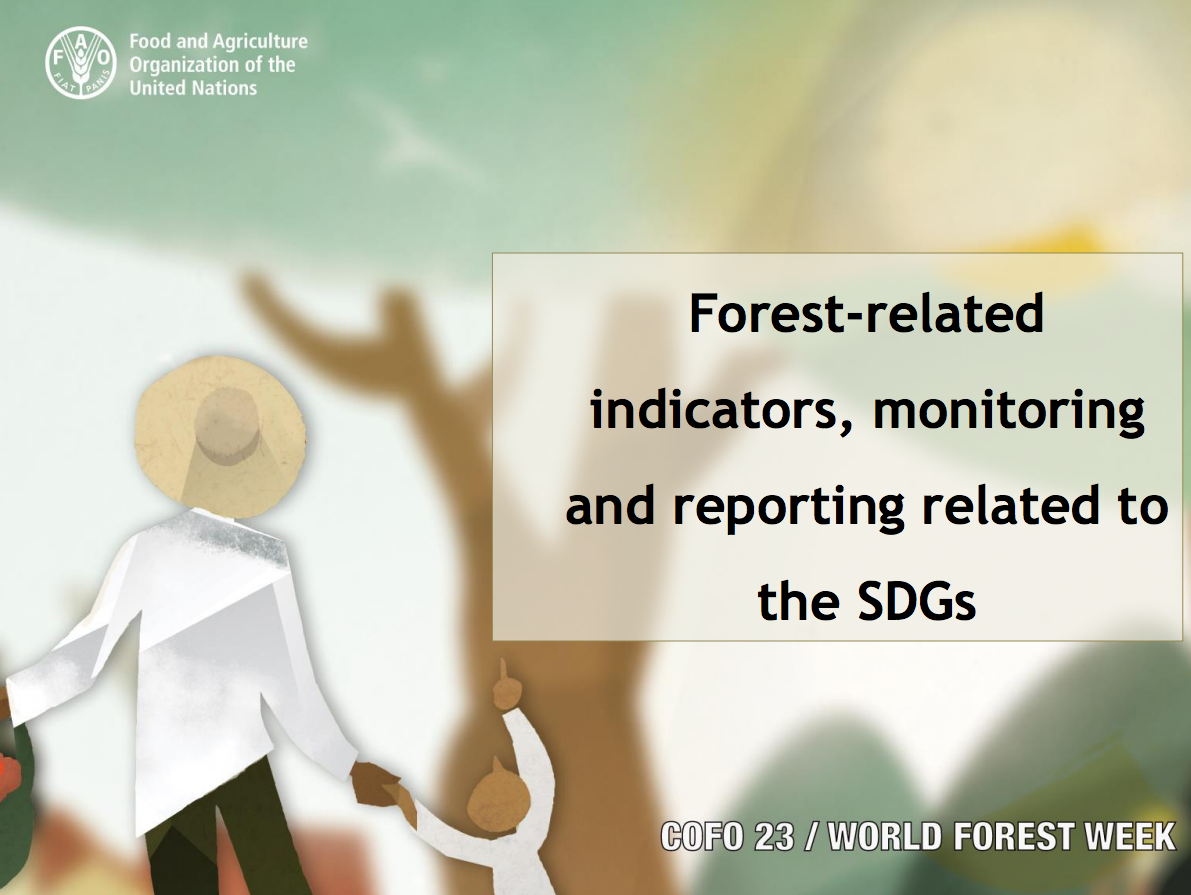
Forest area as a proportion of total land area
Last updated on 1 February 2022
This indicator is currently classified as Tier I. The Food and Agriculture Organization of the United Nations (FAO) is the Custodian agency for this indicator.
Unit of measure: Forest area of total land area (in %)
Why is the indicator important?
Forests are essential to the survival of our planet and climate change mitigation. Forests provide oxygen, store carbon, are biodiversity reservoirs and vital for humanity. Forest area as a percentage of total land area may be used as a rough proxy for analyzing the extent to which forests are being conserved or restored, but it is only partially an indicator of whether forests are being sustainably managed. Changes in forest area reflect the demand for land for non-forest uses and may help identify unsustainable practices in the forestry and agricultural sector.
The availability of accurate data on a country's forest area is crucial for forest policy and planning within the context of sustainable development. This indictor may help inform policy and management actions, as well as guide public and private investment. Adequate forest resources ensure social, economic and environmental stability as well as sustainable development for future generations. The COVID-19 pandemic is expected to add pressure to forests and contribute to increasing deforestation.
How is the indicator measured and monitored?
According to the metadata document, forest is defined as “land spanning more than 0.5 hectares with trees higher than five meters and a canopy cover of more than 10 percent, or trees able to reach these thresholds in situ. It does not include land that is predominantly under agricultural or urban land use.” Land area is understood as the country area excluding area under inland and coastal waters.
Data collection on forest area draws on the Global Forest Resources Assessment (FRA) which is carried out every five years. All data are provided to FAO by countries in the form of a standard country report through an online platform. FRA 2020 is the latest assessment covering 236 countries and territories. Data on land area is collected through the FAO Questionnaire on Land Use, Irrigation and Agricultural Practices that is send annually to 205 countries and territories. Regional aggregations are available. Although access to remote sensing data has improved, forest regrowth or forest with a low canopy covers density cannot always be detected.
By Anne Hennings, peer-reviewed by Anne Branthomme, Forestry Officer at FAO.
Official indicator data
The indicator provides a measure of the relative extent of forest in a country. * Select "year" below to see the most recent data for more countries.
Other related indicators on Land Portal
In addition to the official indicator data, the following indicators provide information on forest land, indigenous as well as individual forest tenure.
| Indicator | Min-Max Number of years |
Countries / Obs | Min / Max Value |
|---|---|---|---|
| Forest land designated by governments for Indigenous Peoples and local communities | |||
| Forest land owned by Indigenous Peoples and local communities | |||
| Forest land owned by individuals and firms | |||
| Indigenous rights to land & forest are (i) recognized and (ii) protected in practice |
Achieving the SDGs and other global commitments on land in the ‘age of data’
The ‘age of ignorance’
For a long time land governance, land tenure and land rights remained in the ‘age of ignorance’. We have known for some time that land governance is a key ingredient for social, economic and environmental development; what was missing, however, was the data. With the little information available to us at the time, we set priorities and crafted interventions for our course of work. Relying on a few rough figures meant that we were often repeating mantras and slogans based on loose, rather than on hard and reliable facts. Most notable among these was the often repeated and now widely disputed, “women own 2% of the world’s land”.
Deforestation and forest degradation in the Amazon Biome
Introduction
The Deforestation and Forest Degradation in the Amazon Biome map was produced by Imazon in order to contribute towards monitoring in the region. The methodology applied simultaneously generates mapping of deforestation and forest degradation [caused by logging activity and forest burning] using Landsat satellite images. Existing methods individually detect and map those processes, which can lead to overlaps in the results and increasing uncertainty in estimates of annual deforestation rates.
Restoration: It’s About More than Just the Trees
By Robert Winterbottom
This is the first installment of WRI’s blog series, New Perspectives on Restoration. The series aims to share WRI’s views on restoration, dispel myths, and explore restoration opportunities throughout the world.
Almost half of the world’s original forests have been cleared or degraded. So naturally, most people think of the “forest restoration” movement as an effort to re-plant these lost trees.
3 Myths and Facts about Forest and Landscape Restoration
By Kathleen Buckingham and Lars Laestadius
This is the third installment of WRI’s blog series, New Perspectives on Restoration. The series aims to share WRI’s views on restoration, dispel myths, and explore restoration opportunities throughout the world.
Paginação
Forest indicators in the Global SDG Indicator Framework
PowerPoint on Forest indicators in the Global SDG Indicator Framework
Forest-related indicators, monitoring and reporting related to the SDGs
FAO presentation on Forest-related indicators, monitoring and reporting related to the SDGs.
Reform State-Owned Forest Enterprise and Ethnic Minority Land Tenure Security in Vietnam
During revolution and national unification, Vietnamese government nationalized agricultural and forest land throughout the country. While agricultural land was de-collectivized in the Doi moi reforms since mid-1980s, the majority of forest and forest land has continued to be managed by state enterprises.
Conversion timber, forest monitoring, and land-use governance in Cambodia
This report presents an overview of national patterns and practices of forest land clearance during the 2012-2013 dry season as a basis for discussing challenges for FLEGT and REDD+ in Cambodia.
Valuing Forest Products and Services in Turkey
The country’s forest areas occupy 21.7
million ha (approximately 27.6 percent of its total surface
area), and are inhabited by close to 10 percent of its total
population. The forest sector generates a variety of timber
and non-timber products and eco-services. The Turkish
Paginação
![]()

By 2020, ensure the conservation, restoration and sustainable use of terrestrial and inland freshwater ecosystems and their services, in particular forests, wetlands, mountains and drylands, in line with obligations under international agreements
Indicator details
The Indicator is conceptually clear, has an internationally established and available methodology and standards, and that data is regularly produced by countries for at least 50 per cent of countries and of the population in every region where the indicator is relevant.
Key dates:










